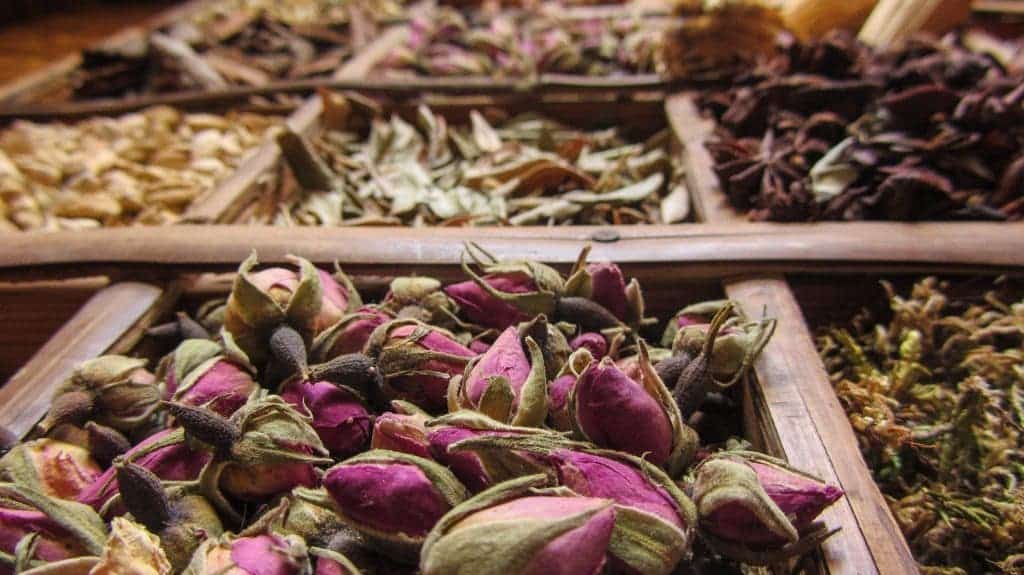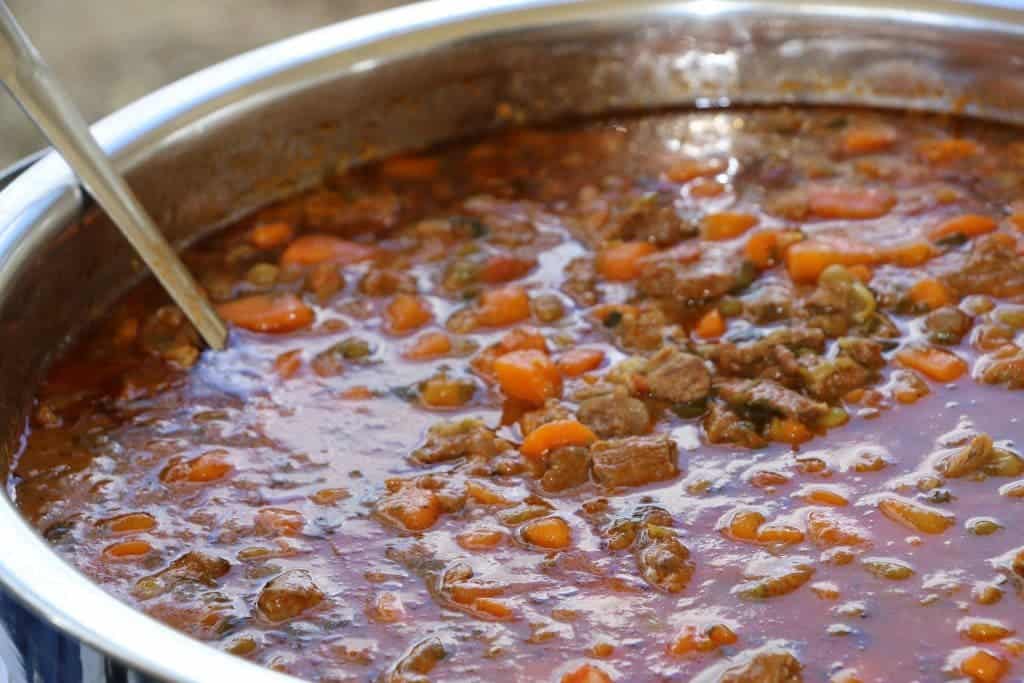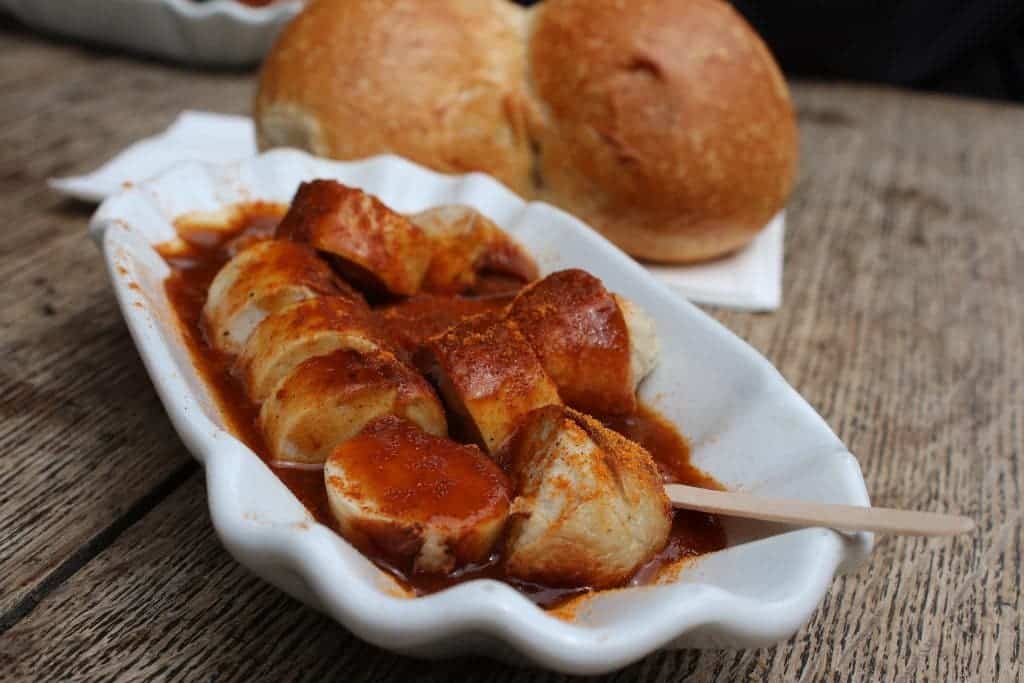Spicy foods are meant to discourage us from eating them. However, humans stand apart from other animals in that we sometimes seek these items to eat specifically because they’re spicy. Exactly why we do this is unclear, but it’s likely a combination of factors ranging from potential health benefits to cultural norms and personal preference.

Do you enjoy doing things that hurt your tongue? Have you ever thought “man, I’d like to feel my mouth on fire!”? Do you get excited at the prospect of hot wings so hot that they make your very soul tremble? If yes, let me just say that I cannot, for the life of me, sympathize with you. I like my meals like I like my car: not burning.
But that’s not a universal preference among people, which raises an interesting point — why do some people like spicy food? On the face of it, it doesn’t make any sense. We know certain plants use chemical defenses against pests and pathogens, chemicals that also give them unique qualities like flavor or taste. Some are milder, like onions, garlic, or pepper. Others will have you in tears, gagging for life, hoping for death. And yet, we keep coming back for seconds. Sometimes we even go to events to see who can withstand the spiciest foods.
In short, although these plants contain substances specifically to make us not want them, we seek them out, specifically. We don’t really know why, but we do have some ideas, and we’re going to talk about those today.
What makes a spice, what makes it spicy?
We’ve talked about spices before here on ZME Science, but mostly from a historical standpoint. In more practical terms, spices are plant products (apart from their leaves, stems, and flowers, which are referred to as ‘herbs’) that can impart taste, flavor, or color to a meal.
They aren’t very common, all things considered. Their special properties were most likely formed because these plants had to contend with environmental pressures such as parasites, predators, or diseases. They became spices through chemical warfare. Since each species had its own issues to contend with, there is a very wide range of substances they employ. We collectively know these plants as spices, but we also make a distinction between them and things that are ‘spicy’.
A good example are peppers. Bell peppers are a spice, they’re the main ingredient in paprika, but they’re not spicy. Jalapeño peppers can be a spice, but they’re definitely very spicy. The difference between these two terms is more of a subjective one. Things that ‘are spicy’ contain substances that are particularly irritating or unpleasant to us as humans. They’re tailored to offend our bodies in particular.

In the case of spicy peppers, that substance is capsaicin. It will make your eyes water, but it wouldn’t have much effect on a bird. We think it comes down to the fact that pepper seeds can’t survive the strong acids in the mammalian gut, but they can make it through a birds’ intestines unscathed. In a bid to help spread their seeds, the theory goes, peppers developed capsaicin to keep mammals away but allow birds to peck away unscathed. We were the intended target for their chemical war effort.
Why people like spices, in general, isn’t very hard to wrap your head around: the flavors they contain are interesting and make meals more enjoyable. Why people like things that are spicy, on the other hand, is a bit more nebulous. Especially so because their spiciness was designed specifically to make us not like them.
Maybe it’s because they make food safe
Evolutionary biologists like to view the traits and behaviors of individual species as elements that help them navigate their environments — like skills that you acquire in time to fulfil your needs. On the one hand, this means that certain plants had a reason to become spices, and we’ve talked about that just now. But on the other hand, it would also mean that we have an evolutionary need to consume spices, or else we wouldn’t.
A paper (Sherman, Billing) published back in 1999 sums up that idea quite nicely in its headline: “Darwinian Gastronomy: Why We Use Spices: Spices taste good because they are good for us“. The authors looked at the use of spices in traditional cuisines across the world from “traditional cookbooks”, comparing this to the natural conditions these cultures developed in.
Their theory was that the use of spice is, at least in part, a pragmatic thing. In warmer climates, they hypothesized, food (meat especially) would spoil quicker and contain more pathogens than in colder climates. The use of spice may well be a subconscious effort to protect ourselves from these, which grew into a cultural preference over time. As we’ve seen before, spices are essentially plant species that use powerful chemicals to protect themselves. The theory, then, is that people mixed these into their foods, in relatively small quantities, to fight off any pathogens in the food — which are a much bigger risk than the chemicals contained in the spices.
Essentially, it’s taking a gamble that the small dose of poison in our food will do more damage to any bacteria or viruses therein than it would do to our bodies.
The authors did find some evidence in support of their hypothesis. The cookbooks from warmer areas mentioned more types of spices overall, and called for more of them to be included in every dish, than those in colder climates. When looking only at meat dishes (meat spoils faster and contains more pathogens than spoiled plant matter), the average number of spices called for by the recipes was 4, and 93% of these recipes called for at least one type of spice. However, Norwegian cookbooks only mentioned 10 different spices and called for 1.6 spices per dish on average. Hungarian cookbooks mentioned up to 21 different spices and called for 3 spices, on average, for each dish.

But wait!” you cry out, wise to the fact that correlation doesn’t imply causation, “so it doesn’t mean one causes the other just because they occur together. And, as always, you’re right. This one paper can’t prove that people employ spices against pathogens in foods. It also just happens that most spices today are endemic (native) to warmer areas, as these generally harbor more diverse communities of plants, animals, and the like. So it could simply be a matter of availability. Spices also tended to be extremely expensive or simply not available to many colder regions in the past, so it would make sense their traditional cookbooks won’t mention them, or only do so sparingly.
At the same time, this doesn’t necessarily mean that the hypothesis is wrong, it just means we can’t know for sure. The authors further note that vegetable dishes called for much fewer spices across the board, which would fit well with their hypothesis — since spoiled meat contains more bacteria than spoiled vegetables, it makes sense to use more spices when cooking meats. Furthermore, there is data to support the fact that many spices do have an antimicrobial or antifungal effect. At the same time, many of the most widely-used spices, like pepper, aren’t that great at the job; salt, for example, is more of a bacteria-killer than black pepper. There is also quite a lot unknown about how effective these spices will be at killing pathogens in the concentrations and conditions seen during cooking.
Another point that might help support this view is that predators, even obligate carnivores, will eat small amounts of plant matter. While we don’t exactly understand why (it could be simply to get more fibers and assist in digestion) it is possible that the instinct formed to help these animals destroy some of the bacteria in their food with the chemicals contained in the plants. Kind of like the theory proposes people do with spices.
Maybe it’s because your folks served spicy food
While evolutionary biologists like to treat everything in a very clean, cause-and-effect way, when talking about people’s preferences, there’s always an element of subjectivity. Our tastes, wants, and desires are — at least in part — shaped by what we’ve experienced so far. A food item can be our favorite not through the virtue of its taste alone, but also due to intangibles such as nostalgia, social mores, our personal experiences.
If you’re sensitive to spicy, you can train yourself to become desensitized to it. Through repeated exposure to low dosages of spicy compounds in our childhoods, then, we can acquire both a preference for and a resilience in the face of spicy foods.
This cultural hypothesis has two major limitations. First off, it’s kind of a self-fulfilling prophecy — we like spicy food because we eat spicy food, so we eat more of it. While it may well be true that we acquire a taste for spiciness with exposure to it, it doesn’t explain why or when this behavior started. If eating spicy food is what makes us like spice, why did we start in the first place? This hypothesis doesn’t offer a starting point.

Secondly, it doesn’t offer an explanation for why people seek increasingly higher levels of spice. Even if we accept, for the sake of the argument, that repeated exposure to spiciness makes us tolerate it better, the fact remains that people often seek out spiciness, especially in cultures that already include it a lot in their cuisine — such as Mexican or Chinese traditions. More to the point, they seek levels of spiciness in excess of what they can already tolerate. If the point is to make the sensation bearable, why do people keep seeking ever stronger burns? It would suggest that their goal isn’t to become accustomed to spicy, rather the sensation itself, or something associated with it. So, after all…
Maybe it’s because we like the burn
Capsaicin can make your mouth hurt a lot. In fact, if you’ve ever bitten into a mean pepper, you know it can make your whole body ache and tremble. You get sweaty, your eyes sting, some crying might be involved. This effect can stay with you for the whole length of your digestive tract (let’s put it that way).
It’s undeniable then that the effect this substance has on us is profoundly unpleasant and temporarily debilitating. And, while keeping in mind that you can die from eating too much capsaicin, it doesn’t actually harm you in any way. What it does, instead, is to trick your body into thinking it’s in danger.
Capsaicin binds to TrpV 1: the transient receptor potential cation channel subfamily V member 1, more easily rememberable as the vanilloid receptor 1. Despite the name, it’s a receptor that’s quite widespread in your body and whose main function is to keep tabs on and regulate your body temperature. Capsaicin wreaks havoc on TRPV1; it binds to it and activates it. While there’s literally no physical damage to your body when you munch on a pepper, to your nervous system, it looks like your mouth is suddenly, and violently, aflame. This effect is so powerful that our bodies’ response to the illusion — mostly in the form of inflammation and changes in heart rate — can kill us.
It is, after all, a substance designed to keep mammals away.

And yet, we have chili eating contests, a food containing a lot of capsaicin. We know for a fact that even people who say they like chili in particular are not immune to the burning sensation it produces. A paper published in 1980 (Rozin, Shiller), “The nature and acquisition of a preference for chili pepper by humans” notes that these individuals “come to like the same burning sensation that deters animals and humans that dislike chili; there is a clear hedonic shift [in their preferences]”, which could come down to “association with positive events, including enhancement of the taste of bland foods, postingestional effects, or social rewards”.
Another point they raise, however, one that I find much more entertaining, is that eating spicy foods is a way to toy with danger. Much like a roller coaster, that danger is (pretty much) contained. While we do understand that, on an intellectual level, our bodies don’t make the distinction. The physiological effects of being in danger and/or on fire, such as the rush produced by adrenaline or the feel-good sensation produced by the release of endorphins in our system, are still genuine.
In this light, spicy food can be seen as a facet of human thrill seeking — or what the authors refer to as “enjoyment of ‘constrained risks'”.
That bit about endorphins is also pretty interesting. They are a family of compounds that our bodies use to clamp down on stress and pain when needed. They’re not really a chemical family, more of a pharmacological convention, as several different substances with different structures are endorphins. But function-wise, they work very much like opioid drugs, causing euphoria and a host of other delightful effects, including, as mentioned, pain relief. They’re one of a group of molecules the Internet gleefully knows as the ‘happiness molecule’, alongside serotonin, dopamine, and oxytocin. It’s a pretty wide group because the Internet, overall, is not a very capable pharmacologist, but there is a kernel of truth at the core of the meme.
Eating spicy foods is a reliable and non-threatening way of squeezing out some of this happy juice from your brain. This would also explain why some people would seek ever-spicier foods to torture themselves with. As they become desensitized to a certain level of spicy, an ever higher threshold is needed to obtain the same endorphin reward.
By itself, this doesn’t really explain why some people are aficionados of spice — if eating spicy food is a painful way of enjoying some pleasure, why isn’t everyone doing it? We don’t know. There is some evidence (Byrnes, Hayes, 2012) that personality traits, especially ones such as thrill-seeking, as well as differences in our individual abilities to perceive substances like capsaicin, have a role to play. Someone who’s psychologically predisposed to taking risks, and has a lower abundance of TrpV 1 receptors on their mouth, I’d imagine, is more likely to engage in such behavior.
At the end of the day, the truth is we don’t know. If I had to take a wager, I’d say that all the hypotheses we’ve talked about today play a part. They’re not mutually exclusive. How much influence they have is, very likely, dependent on who you’re talking with. For some it’s the thrill, and the bragging rights. For others, it’s grandma’s cooking. People are complex, and so are the forces that drive us, so we probably won’t ever be able to tell for sure why any of us — nevermind all of us, as a species — would engage in such a behavior.
But the thing we do know is that, apart from a few species that have evolved specifically to be less sensitive to certain irritants, we are the only ones which seek out food that hurts to eat. Could that be a sign of how far we’ve come, that we’d want to seek a semblance of danger just to feel excited? Or is it the other way around, and such predisposition for risky behavior is what set us on the path to success? Very interesting questions to ponder the next time you’re praying for salvation over a bowl of chili.


